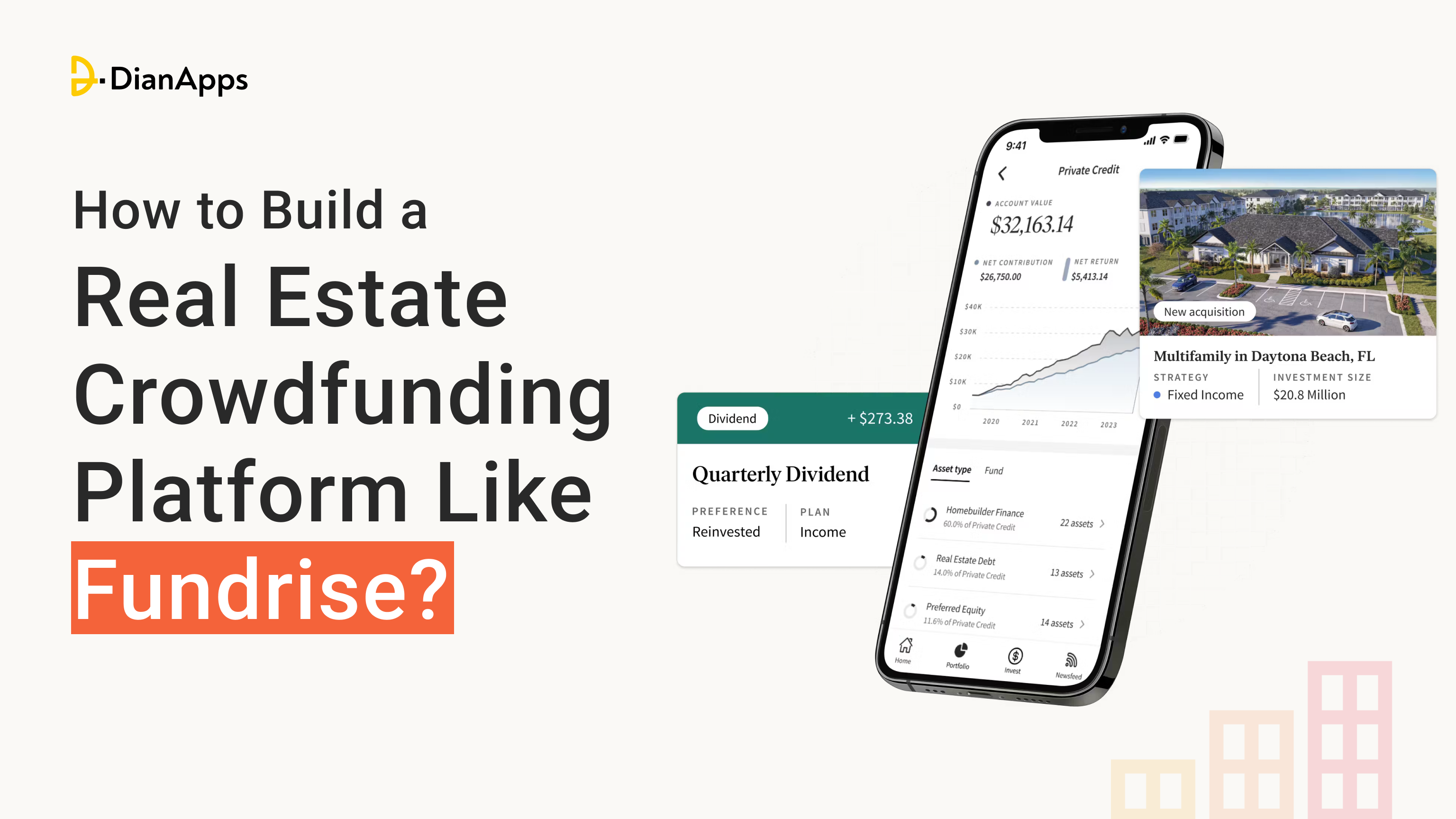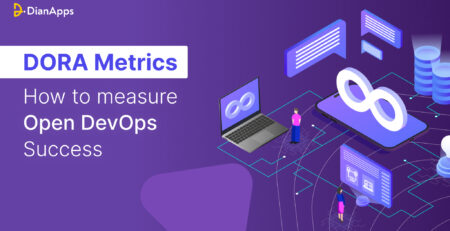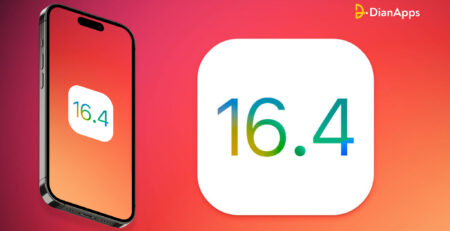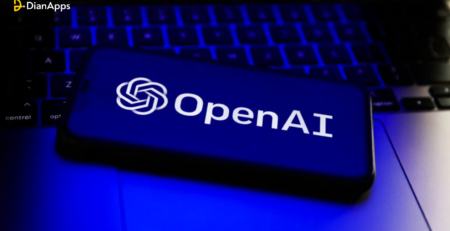How to Build a Real Estate Crowdfunding Platform Like Fundrise?
What is crowdfunding? Is there any real estate crowdfunding app that is scaling on the internet? How can I get started with building a real estate crowdfunding app? If this is what your mind is circling around, relax, this is where you find answers!
The real estate market is undergoing a major digital transformation, driven largely by platforms that are making property investment more accessible, transparent, and scalable.
Among the front-runners in this revolution is Fundrise, a real estate crowdfunding platform that allows everyday investors to participate in high-yield property ventures without needing millions in the bank.
As real estate crowdfunding platforms continue to gain momentum, the PropTech industry is seeing a surge in demand for secure, scalable, and user-friendly investment platforms.
In fact, the global real estate crowdfunding market is projected to reach $868 billion by 2028, signaling a massive opportunity for startups, investors, and developers looking to capitalize on this growing trend.
But how do you build a platform like Fundrise? What features do you need? And what are the legal and technological considerations you must account for?
In this blog, we’ll break down the entire process of building a profitable real estate app, from core features and compliance strategies to tech stacks and development costs.
This guide is your blueprint to launching the next big real estate investment platform.
What is a Real Estate Crowdfunding Platform?
A real estate crowdfunding platform is a digital marketplace that allows multiple investors to pool their funds and invest in real estate projects, residential, commercial, or mixed-use, through a single online interface.
Unlike traditional real estate investing, where large capital and direct property ownership are prerequisites, crowdfunding platforms lower the entry barrier by enabling fractional investments.
These platforms connect real estate developers seeking funding with individual investors looking for passive income opportunities. By leveraging technology, investors can browse vetted properties, evaluate risk levels, review expected returns, and make informed decisions, all from their desktops or mobile devices.
Popular platforms like Fundrise, RealtyMogul, and CrowdStreet have reshaped the investment landscape by offering:
- Low minimum investment thresholds (as low as $10–$500)
- Diversification across real estate portfolios
- Automated dividend payouts
- Transparency and real-time performance tracking
At its core, a real estate crowdfunding platform democratizes real estate investing, giving everyday people access to opportunities that were once limited to institutional investors and high-net-worth individuals.
As more people seek alternative investment avenues, building such a platform isn’t just innovative, it’s in demand.
Why Build a Platform Like Fundrise?
With rising interest in alternative investments and increased adoption of fintech app development services, real estate crowdfunding is no longer a niche, it’s a booming opportunity.
Building a platform like Fundrise positions you at the intersection of technology, finance, and real estate, with immense potential for revenue generation and market disruption.
1. Massive Market Potential
The global real estate crowdfunding market is experiencing exponential growth. More investors, especially millennials and Gen Z, are seeking accessible ways to invest in assets beyond stocks and mutual funds.
A platform like Fundrise taps directly into this demand by offering real estate-backed returns with minimal entry barriers.
2. Accessibility and Financial Inclusion
Traditional real estate investing often requires significant upfront capital and market knowledge. Crowdfunding platforms remove these barriers, enabling individuals to invest with as little as $10–$500. This democratization opens the door to a wider audience and a larger user base.
3. Multiple Revenue Streams
A real estate crowdfunding platform can generate revenue through various channels:
- Platform fees (management, origination, or listing fees)
- Performance-based fees (a percentage of profits)
- Premium subscription models for advanced features or early access to deals
- Affiliate partnerships and sponsored property listings
4. Scalable Business Model
Once the platform is built, onboarding new users and properties becomes a largely automated process. With proper compliance, marketing, and support systems, the model can scale across cities, regions, and even internationally.
5. Boosts Real Estate Developer Access to Capital
Developers often face lengthy and rigid processes for funding from banks or institutions. A platform like Fundrise streamlines this by offering a fast, transparent, and community-driven way to raise capital, making your solution equally valuable to both sides of the marketplace.
6. Growing Trust in Fintech and PropTech
Digital investment platforms are no longer met with skepticism. With increased security, regulatory clarity, and user education, PropTech solutions like Fundrise are now seen as legitimate, even preferred, investment alternatives.
Also read how to develop a Fintech app in 2025?
Bottom line? Building a real estate crowdfunding platform is not just a tech project, it’s a high-value business model designed for the future of investing.
Core Features of a Real Estate Crowdfunding Platform
To build a successful real estate crowdfunding platform like Fundrise, you need more than just a sleek UI. The platform must be secure, intuitive, compliant, and equipped with features that serve both investors and property developers seamlessly.
Here’s a breakdown of the must-have features divided by user roles:
A. Investor-Focused Features
User Registration & KYC/AML Verification
Secure sign-up with identity verification to ensure compliance with legal regulations like KYC (Know Your Customer) and AML (Anti-Money Laundering).
Investor Dashboard
A personalized hub where users can track investments, view portfolio performance, and manage earnings.
Property Listings with Filters
Detailed property profiles including location, valuation, risk rating, expected ROI, and timeline, along with filtering options for informed decision-making.
Digital Wallet Integration
Secure digital wallets for managing deposits, withdrawals, and earnings. Find the steps to step up a digital wallet with the help of this guide.
Automated Dividend Distribution
Scheduled payouts of rental income or returns directly into users’ wallets or linked bank accounts.
Performance Analytics & Reports
Visual graphs and real-time data to track ROI, asset growth, and historical performance of their investment portfolio.
e-Signature Support
Integration for digital agreement signing to ensure fast, paperless transactions.
B. Admin & Property Manager Features
Property Onboarding & Campaign Creation
Admin panel for listing new properties, adding project details, visuals, ROI projections, and setting investment goals.
Investor Relationship Management (IRM)
Track communications, manage queries, send updates, and notify investors about dividends or new listings.
Compliance Management Tools
Ensure SEC filings (like Reg A+, Reg D, or Reg CF), tax documentation, and legal disclosures are updated and accessible.
Document Management System
Upload, store, and share legal contracts, inspection reports, and property deeds in one centralized location.
Performance Analytics & Admin Dashboard
Overview of investment activity, campaign progress, user sign-ups, and payout status, complete with data visualization.
Communication Tools
Push notifications, email alerts, and in-app messaging to keep investors engaged and informed.
These features form the foundation of a trustworthy and scalable real estate crowdfunding app. Prioritizing transparency, automation, and user experience will set your platform apart and help it grow, just like Fundrise.
Step-by-Step Process to Build a Platform Like Fundrise
Developing a real estate crowdfunding platform is a complex but rewarding journey. It demands a perfect blend of technical execution, legal compliance, and user-centric design. Below is a detailed roadmap to guide you from concept to launch:
Step 1: Conduct Market Research & Define Your Niche
Before you begin development, identify your target audience and investment model:
- Will you focus on residential, commercial, or mixed-use properties?
- Will your platform support accredited investors, retail investors, or both?
- What investment model will you follow, equity-based, debt-based, or hybrid?
Competitor analysis (e.g., Fundrise, RealtyMogul) can help you identify gaps and opportunities to differentiate. To better understand market trends, monitor property listings, and analyze competitor strategies, many real estate platforms rely on a Zillow scraper to collect and organize data efficiently.
Step 2: Define Platform Requirements & Monetization Strategy
Document your core features, integrations, compliance needs, and performance goals. Then, choose your revenue model:
- Listing fees from developers
- Management fees from investors
- Performance fees from ROI
- Premium features or tiered memberships
This planning stage helps you avoid scope creep during development.
Step 3: Partner With Legal Experts
Real estate crowdfunding is heavily regulated. Hire legal advisors to help with:
- SEC regulations (Reg A, Reg D, or Reg CF)
- Investor eligibility and fund management compliance
- KYC/AML processes
- Creating Terms of Use, Privacy Policy, and Investment Disclaimers
Without this step, your platform risks serious penalties or shutdowns.
Step 4: Choose the Right Tech Stack
To build a scalable, secure, and responsive platform, opt for modern technologies:
- Frontend: React.js / Angular / Vue.js
- Backend: Node.js / Django / Ruby on Rails
- Database: PostgreSQL / MongoDB
- Cloud Infrastructure: AWS / Azure / Google Cloud
- Payment Integration: Stripe / PayPal / Plaid
- Security: SSL, 2FA, Data Encryption, GDPR & CCPA compliance
You may also need blockchain to enable tokenized real estate investments.
Step 5: Design the UX/UI
Design an intuitive, trust-building interface:
- Clean investor dashboards
- Easy navigation for property listings
- Mobile-responsive layouts
- Transparent CTA buttons (e.g., “Invest Now,” “Track Returns”)
- Accessible design for diverse user bases
A professional UI builds investor confidence and increases platform engagement.
Step 6: Develop MVP (Minimum Viable Product)
Begin with a basic yet functional version of your platform, including:
- User registration & KYC
- Investment dashboard
- Property listings
- Admin panel
- Payment system
Test your MVP with a small investor base before scaling.
Step 7: Test for Security, Compliance & Performance
Conduct rigorous testing:
- Penetration testing to uncover vulnerabilities
- Load testing to ensure high performance under traffic
- Legal audits for SEC & tax compliance
- User testing for seamless UX
Crowdfunding platforms handle sensitive financial data, cutting corners here is not an option.
Step 8: Launch & Market Your Platform
After successful testing:
- Launch a beta version to a limited audience
- Collect user feedback and iterate
- Roll out marketing campaigns (SEO, paid ads, webinars, influencer collaborations)
- Establish trust with early testimonials and transparent reporting
A strong go-to-market strategy is crucial to gaining traction in this competitive space.
Step 9: Maintain & Scale
Post-launch, your work has only begun:
- Regularly add new features based on user feedback
- Update legal policies with evolving regulations
- Optimize platform performance
- Expand property listings and diversify geographies
With the right strategy, your platform can evolve from a startup to a Fundrise-level brand.
Compliance and Regulatory Considerations
Building a real estate crowdfunding platform like Fundrise involves navigating a heavily regulated environment. Failing to adhere to legal standards can result in hefty fines, legal disputes, or shutdowns. To operate legally and build investor trust, here are the essential compliance and regulatory checkpoints to address:
1. Understand SEC Regulations
In the United States, crowdfunding platforms must comply with Securities and Exchange Commission (SEC) guidelines. The three most commonly used exemptions include:
- Regulation A+
Allows you to raise up to $75 million from both accredited and non-accredited investors. It requires SEC qualification but offers wider investor participation.
- Regulation D (Rule 506b or 506c)
Limits investments to accredited investors but allows for quicker fundraising with fewer reporting requirements.
- Regulation Crowdfunding (Reg CF)
Permits raising up to $5 million annually from the general public. It’s ideal for early-stage platforms but comes with strict reporting and investor cap limits.
2. KYC and AML Compliance
To prevent fraud and money laundering, your platform must implement:
- Know Your Customer (KYC) protocols to verify investor identities
- Anti-Money Laundering (AML) mechanisms to flag suspicious activities
- Integration with third-party compliance providers (like Alloy, Onfido, or Trulioo) for automated checks
3. Data Privacy and Security Laws
Protecting user data is non-negotiable. Ensure your platform adheres to:
- GDPR (General Data Protection Regulation) – for users from the EU
- CCPA (California Consumer Privacy Act) – if operating in or targeting California
- PCI-DSS – for secure handling of card payments and financial data
- SOC 2 Type II Compliance – if handling sensitive investor financial records
4. Investor Disclosures and Risk Acknowledgment
Your platform must clearly communicate:
- Investment risks and market volatility
- Projected returns vs. actual performance
- Exit timelines and liquidity options
- Tax implications on earnings
Incorporate e-signatures and digital documentation to ensure investors acknowledge these disclosures before committing funds.
5. State Licensing and Real Estate Laws
Some states may require additional licensing or filings depending on:
- Where your investors are located
- Where the properties are listed
- The type of real estate contracts you manage
Consult a securities attorney for guidance based on your operational geography.
6. Escrow and Fund Handling
To safeguard investor funds:
- Use third-party escrow accounts to hold capital until fundraising goals are met
- Ensure clear terms around fund release, cancellations, or refunds
- Partner with escrow providers or fintech banks experienced in real estate crowdfunding (e.g., Prime Trust, North Capital)
7. Ongoing Reporting and Audits
Once live, your platform should support:
- Annual financial reports to investors
- Project status updates and earnings summaries
- Audit trails for compliance checks
Automating these reports improves transparency and builds long-term investor loyalty.
Pro Tip: Partner with legal experts who specialize in fintech and real estate regulations early in the process. Regulatory groundwork is not just a legal necessity, it’s a competitive advantage.
How Much Does It Cost to Build a Real Estate Crowdfunding Platform?
The cost of building a real estate crowdfunding platform like Fundrise can vary significantly depending on features, technology stack, and development approach. Whether you’re building from scratch or using white-label solutions, here’s a breakdown of the key cost factors and a ballpark estimate.
Key Cost Breakdown
- Custom platform development ranges between $80,000 to $200,000+, depending on features and complexity.
- White-label solutions cost around $25,000 to $60,000 for a faster launch with limited customization.
- UI/UX design can cost $5,000 to $20,000+ based on the design depth and branding.
- Backend development expenses start from $30,000 to $80,000+ for databases, APIs, and logic.
- Frontend development typically costs $15,000 to $40,000+ for investor and admin interfaces.
- Security and compliance implementation may add $10,000 to $25,000+ to ensure legal safety.
- Third-party integrations like KYC, escrow, and payment systems vary based on usage volume.
Ongoing Monthly Costs
- Cloud hosting and maintenance can cost $500 to $2,000/month.
- Support and platform updates range between $1,000 to $5,000/month.
- Legal and compliance retainers may cost $2,000 to $10,000/month.
- Marketing and user acquisition is flexible, often $5,000 to $50,000+ per month.
Total Cost Summary
- The MVP version may cost between $60,000 to $120,000.
- Full-featured platform can go up to $150,000 to $250,000+, depending on scale and region.
Monetization Strategies for Your Real Estate Crowdfunding Platform
Building a platform like Fundrise is not just about connecting investors and properties, it’s also about creating sustainable revenue streams. Here are the common ways to monetize your platform:
- Management Fees: Charge investors a percentage (typically 1%) of their invested capital annually for managing investments.
- Performance Fees: Take a share (usually 10-20%) of profits earned when investments perform well.
- Listing Fees: Charge real estate developers or sponsors fees to list their projects on your platform.
- Subscription Plans: Offer premium memberships with added benefits like early access to deals or exclusive insights.
- Transaction Fees: Collect small fees on deposits, withdrawals, or payments processed through the platform.
Combining multiple revenue streams can help maximize profits while offering value to both investors and developers.
Challenges to Overcome When Building a Real Estate Crowdfunding Platform
Building a platform like Fundrise isn’t without hurdles. Here are some key challenges you’ll face:
Regulatory Complexity:
Navigating SEC rules, KYC/AML laws, and state licensing can be daunting and costly.
Security Risks:
Protecting sensitive investor data and financial transactions requires robust cybersecurity measures.
User Trust:
Convincing investors to trust a relatively new platform demands transparency, strong legal frameworks, and excellent user experience.
Scalability:
Ensuring your platform can handle growth in users, investments, and property listings without compromising performance.
Payment and Fund Management:
Seamless integration of payment gateways and escrow services to manage funds safely.
Market Competition:
Differentiating your platform from established players like Fundrise, CrowdStreet, and RealtyMogul.
How DianApps Can Help You Build a Winning Real Estate Crowdfunding Platform
At DianApps, we specialize in developing secure, scalable, and compliant fintech and real estate platforms. Here’s how we can support your vision:
- Expert Regulatory Guidance: We partner with legal experts to ensure your platform complies with all relevant securities and data privacy laws.
- Custom Development: Tailored solutions built from the ground up to meet your unique business needs and growth plans.
- Robust Security: Implementation of industry-leading security protocols, including encryption, two-factor authentication, and continuous monitoring.
- Seamless Integrations: We connect your platform with top KYC/AML providers, payment gateways, and escrow services for smooth fund flow.
- User-Centric Design: Our UI/UX team crafts intuitive, engaging interfaces that build investor confidence and drive retention.
- Ongoing Support: Post-launch maintenance, feature upgrades, and compliance updates to keep your platform competitive and secure.
Partner with DianApps to transform your vision into a market-ready crowdfunding platform that attracts investors and maximizes growth.
Conclusion
Building a real estate crowdfunding platform like Fundrise is an exciting yet challenging endeavor. Success requires a deep understanding of legal frameworks, advanced technology, user-centric design, and smart monetization.
By carefully navigating these complexities and leveraging the right expertise, you can create a platform that democratizes real estate investing and opens new opportunities for investors and developers alike.
If you’re ready to take the next step in launching your crowdfunding platform, DianApps is here to help, from concept to launch and beyond. Let’s build the future of real estate investment together with our mobile app development services.




